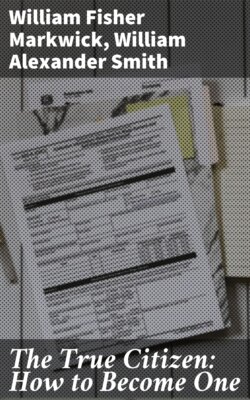Читать книгу The True Citizen: How to Become One - William Alexander Smith - Страница 8
На сайте Литреса книга снята с продажи.
JOHN JAMES AUDUBON.
ОглавлениеIn 1828 a wonderful book, "The Birds of America," by John James Audubon, was issued. It is a good illustration of what has been accomplished by beginning in one's youth to use the powers of observation. Audubon loved and studied birds. Even in his infancy, lying under the orange trees on his father's plantation in Louisiana, he listened to the mocking bird's song, watching and observing every motion as it flitted from bough to bough. When he was older he began to sketch every bird that he saw, and soon showed so much talent that he was taken to France to be educated.
He entered cheerfully and earnestly upon his studies, and more than a year was devoted to mathematics; but whenever it was possible he rambled about the country, using his eyes and fingers, collecting more specimens, and sketching with such assiduity that when he left France, only seventeen years old, he had finished two hundred drawings of French birds. At this period he tells us that "it was not the desire of fame which prompted to this devotion; it was simply the enjoyment of nature."
A story is told of his lying on his back in the woods with some moss for his pillow, and looking through a telescopic microscope day after day to watch a pair of little birds while they made their nest. Their peculiar grey plumage harmonized with the color of the bark of the tree, so that it was impossible to see the birds except by the most careful observation. After three weeks of such patient labor, he felt that he had been amply rewarded for the toil and sacrifice by the results he had obtained.
His power of observation gave him great happiness, from the time he rambled as a boy in the country in search of treasures of natural history, till, in his old age, he rose with the sun and went straightway to the woods near his home, enjoying still the beauties and wonders of Nature. His strength of purpose and unwearied energy, combined with his pure enthusiasm, made him successful in his work as a naturalist; but it was all dependent on the habit formed in his boyhood—this habit of close and careful observation; and he not only had this habit of using his eyes, but he looked at and studied things worth seeing, worth remembering.
This brief sketch of Audubon's boyhood shows the predominant traits of his character—his power of observation, the training of the eye and hand, that made him in manhood "the most distinguished of American ornithologists," with so much scientific ardor and perseverance that no expedition seemed dangerous, or solitude inaccessible, when he was engaged in his favorite study.
He has left behind him, as the result of his labors, his great book on "The Birds of America," in ten volumes; and illustrated with four hundred and forty-eight colored plates of over one thousand species of birds, all drawn by his own hand, and each bird being represented in its natural size; also a "Biography of American Birds," in five large volumes, in which he describes their habits and customs. He was associated with Dr. Bachman of Philadelphia, in the preparation of a work on "The Quadrupeds of America," in six large volumes, the drawings for which were made by his two sons; and, later on, published his "Biography of American Quadrupeds," a work similar to the "Biography of the Birds." He died at what is known as "Audubon Park," on the Hudson, now within the limits of New York city, in 1851, at the age of seventy.
[Footnote: For fuller information concerning Audubon, consult "Life and Adventures of John J. Audubon," by Robert Buchanan (New York, 1869); Griswold's "Prose Writers of America" (Philadelphia, 1847); Mrs. Horace St. John's "Audubon the Naturalist" (New York, 1856); Rev. C. C. Adams's "Journal of the Life and Labors of J. J. Audubon" (Boston, 1860), and "Audubon and his Journals," by M. R. Audubon (New York, 1897).]
